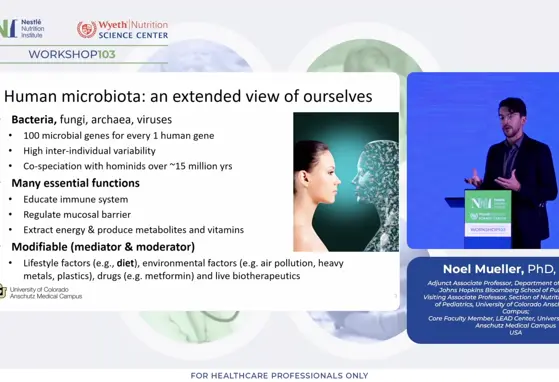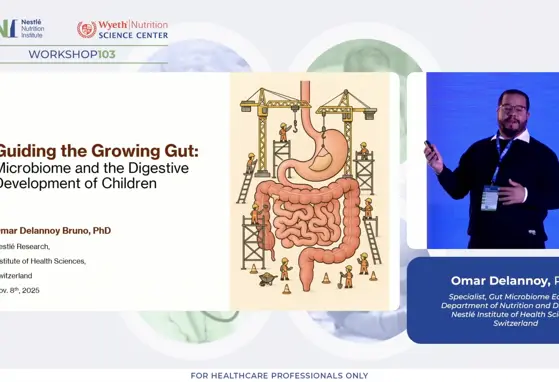Nutrition Issues in Adolescence
Prof. Gabriel Anabwani
Background
There is no agreed definition of adolescence; the WHO defines it as ages 10-18 while the American Academy of Pediatrics defines it as 13-18 years. The overriding fact is that this period is characterised by rapid, physical, emotional, social, sexual, psychological, development and maturation. Along with social factors, these characteristics make adolescents vulnerable to a range of nutritional issues.
There are arguably two key reasons for interest in nutrition issues among adolescents. Numbering over one billion, they constitute roughly 20%, of the world population; and in many developing countries their demographic slice is much larger. This large number makes them important as a group as the future economic prospects of any country will depend on the health and education of adolescents today. Secondly, adolescence provides an opportunity to nurture the life-style habits necessary for a healthy productive life which avoids or reverses the current trend towards obesity and premature cardiovascular disease. This review outlines the most common nutrition issues of adolescence.
Unhealthy eating habits
The bulk of data on the eating habits among adolescents comes from the west and particularly the USA. The data indicate that some dietary patterns are consistently observed among adolescents which put them at risk of unhealthy eating. These include snacking (on energy-dense but nutrient-poor items); meal skipping; irregular eating patterns; and a wide use of fast food for meals and snacks. More than 50% of respondents in the National Adolescent School Health Survey (US Dept Health and Human Services, 1989) reported missing breakfast while snacking was reported by 90% in the same survey. Only 39% reported eating nutritious snacks, the majority reported snacks of “junk” food - chips, soda, sweets and cake. Healthy snacks can be important for adolescents owing to their high energy requirements but fast foods - a popular choice – can contribute to high intakes of saturated fat. Other common habits include eating away from home, low intake of fruits, vegetables and dairy products. Self-image and body weight concerns particularly in girls may lead to faulty dieting practices. Tooth decay and periodontal disease may result from a combination of poor oral hygiene and poor eating habits.
Because adolescence is characterised by increasing maturity and a trend towards autonomy and independence, adolescents are generally curious, adaptive and open to new ideas. They may explore unconventional dietary practices (e.g. vegetarian diets). As they mature, their own choices and preferences gain priority over eating habits acquired in the family and they have more control over what they eat, when and where. This is an important window for nutritional education interventions with potential to impact lifetime eating habits and health.
Undernutrition and pregnancy
Undernutrition - manifesting as stunting or underweight - is associated with deficiencies in earlier childhood. Other causes include unhealthy eating habits and poor access to food may be an issue in developing countries. The increased metabolic requirements of pregnancy in affected adolescents increase their risk of nutritional deficiencies, maternal morbidity and mortality, low birth weight. Low birth weight babies are at increased risk of stunted growth and all the known co-morbidities of later life.
Obesity
Obesity among both adolescents and adults is increasing worldwide in both poor and rich economies. While genetic factors have a role, environmental factors (a sedentary life style and high fat diets) play the dominant role. The major long term consequence of adolescent obesity is persistence into adulthood and association with an increased risk of cardiovascular and metabolic disease in later life. It is estimated that at least one half of cardiovascular mortality is nutrition-related and up to half of type-2 diabetes cases are nutrition-related. In addition obesity in adolescent has other undesirable health consequences. According to a review by the WHO (1990) obesity-related issues include sleep disturbances; psychological and social problems; poor self-esteem and body image. In women obesity during adolescence may affect future marital and social economic status.
Micronutrient deficiency
Iron is the most widespread micronutrient deficiency. Deficiency is most prevalent among pregnant women, followed by pre-school children and adolescents – particularly girls. Key causes include poor dietary intake, reduced bioavailability and increased losses due to intestinal worms. Efforts to mitigate iron deficiency should include diets rich in Vitamin C (to increase bioavailability of iron) and Vitamin A (to increases the effectiveness of iron).
As maximum bone growth occurs during this period adolescents are prone to calcium deficiency and increased tendency to bone fracture. Later on in life calcium deficiency in adolescence is associated with high post-menopausal bone loss. These deficiencies and effects can be reversed by adequate intake of calcium. Studies have also reported a positive impact of zinc on linear growth among adolescents with zinc deficiency – particularly boys.
Iodine deficiency is still an issue in parts of the world without access to iodised salt. To prevent the deleterious mental effects of iodine deficiency on the foetus, normal iodine status must be achieved prior to pregnancy; and for this to happen adolescents, particularly girls, should be targeted in places where iodine deficiency is endemic.
Although Vitamin A deficiency has in the past been seen as primarily a problem of children under the age of five years, it is now recognised from the impact of supplementation studies that it may be widespread among women, and an important contributor to maternal mortality. It may also be common among adolescent girls; and as indicated above, it is entangled with iron deficiency. Therefore adolescence is a good time to prevent vitamin A deficiency. This can be achieved primarily through education and food.
Eating disorders
Unnecessary dieting is highly prevalent in western societies especially among adolescent girls. There is a broad spectrum of eating disturbances with bulimia nervosa (excessive eating followed by self-induced vomiting or periods of fasting) and anorexia nervosa (aversion to food) representing the extreme. Risks associated with eating disorders include stunted growth, delayed puberty and progression to overt eating disorders. Self-esteem seems to play a major role. School-based primary prevention programmes targeting girls may be the best way to tackle eating disorders.
Conclusion
Adolescence is associated with a number of important nutritional issues. At the same time this period provides an important window of opportunity for interventions that promote the principles of a healthy eating life style - with potential to radically change the chronic disease landscape among adults across the world.
References
- Nutrition in adolescence – Issues and Challenges for the Health Sector. WHO Discussion paper on adolescence. ISBN 92 4 159366 0 (NLM classification: WS 115); WHO 2005.
- AHA Scientific Statement. Progress and Challenges in Metabolic Syndrome in Children and Adolescents. http://www.americanheart.org/presenter.jhtml?identifier=3003999
- Bela Sachdeva. Nutrition Problems in Adolescence. http://www.pediatriconcall.com/fordoctor/Conference_abstracts/report.aspx?reportid=414
If you liked this post you may also like

Mindful Microbes: The Interplay Between Environment, Gut Microbiome, Brain, and Behavior

Exploring the Crosstalk: Nutrition, Microbiome, and Cardiometabolic Health

Guiding the Growing Gut: Microbiome and the Digestive Development of Children

Nourishing the Microbiome at Preschool age: Dietary influences from infancy to present